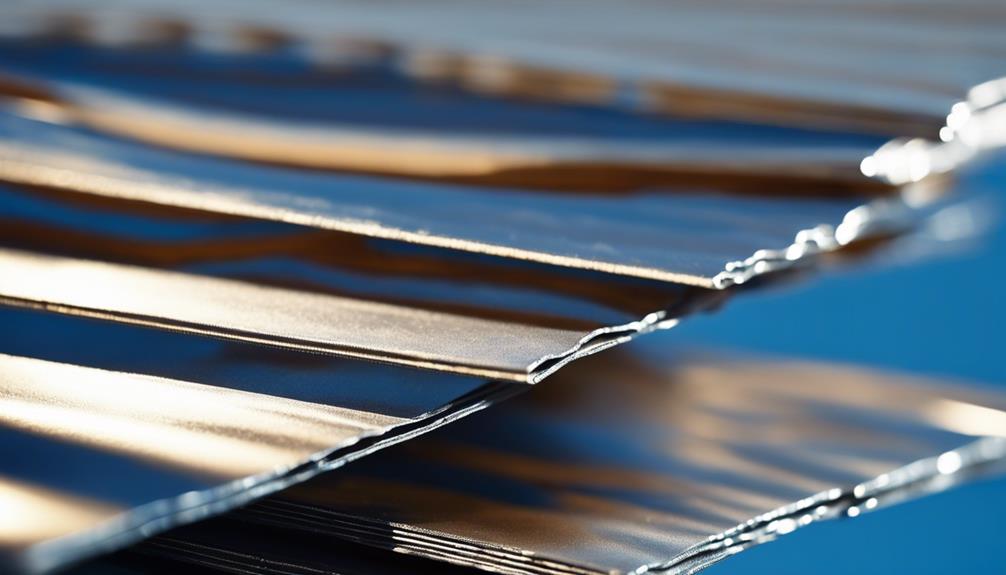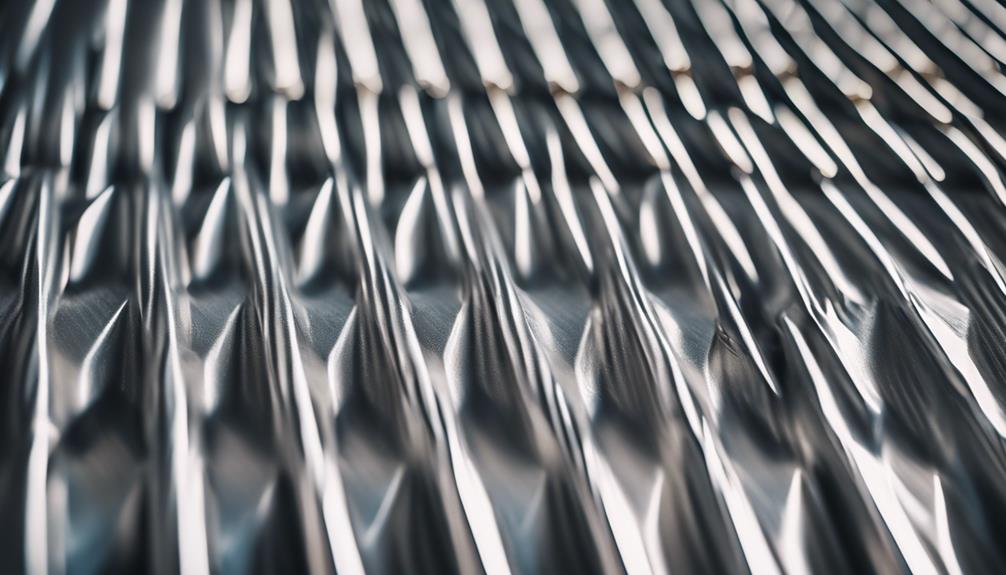Iron sheets play an essential role in elevating the overall appearance and comfort of your bed, providing a crisp and luxurious sleep setting. By ironing sheets, you can effectively eliminate wrinkles, reduce allergens, and create a cleaner sleeping environment. Investing time in ironing sheets can lead to enhanced relaxation and promote higher quality sleep. Discover more benefits, techniques, and tips for achieving wrinkle-free ironed sheets by exploring the different facets of ironing bed linens.
Key Takeaways
- Ironing sheets enhances appearance and comfort of bed
- Proper ironing techniques for different fabrics
- Invest in quality ironing equipment for best results
- Master heat settings for wrinkle-free sheets
- Store ironed sheets correctly for longevity
Benefits of Iron Sheets
What are the benefits of using iron sheets in creating a luxurious sleep environment? Ironing sheets is not just a chore; it contributes notably to enhancing the overall appearance and comfort of a bed. When sheets are ironed, they not only look crisp and neat but also feel smoother against the skin, providing a more luxurious sleep experience. Additionally, freshly ironed sheets help eliminate wrinkles, reducing the presence of allergens and bacteria in the bed. The process of ironing damp fabric is particularly effective in removing persistent wrinkles and allergens, ensuring a clean and hygienic sleeping environment. Overall, investing time in ironing sheets contributes to a polished and inviting bedtime routine, promoting better relaxation and quality sleep.
Ironing Techniques for Different Fabrics
Ironing various fabrics requires distinct techniques tailored to the specific properties of each material to achieve the best results and maintain fabric longevity. When ironing cotton sheets, using a high heat setting helps in achieving a crisp finish. However, linen sheets should be ironed at cooler settings with gentle pressure to avoid overheating and potential damage. Silk sheets, being delicate, require extra caution with a lower temperature setting to prevent harm. It is advisable to use a protective cloth when ironing delicate fabrics like silk and satin to shield them from direct heat exposure. Adhering to proper ironing techniques specific to different fabrics ensures the best outcomes and helps extend the lifespan of the fabric.
Proper Ironing Equipment for Bed Sheets
To achieve best results when ironing bed sheets, selecting the appropriate ironing equipment is essential for effectively removing wrinkles and maintaining the fabric's quality. A well-padded ironing board paired with a steam iron is recommended for best wrinkle removal. Adjustable heat settings on the iron are important when dealing with different fabric types such as cotton, linen, silk, and satin. These settings guarantee that the iron's temperature is suitable for the specific fabric being ironed, preventing damage. Investing in quality ironing tools, like a spray bottle to slightly dampen the fabric before ironing, can also aid in the process. Choosing the right fabric, such as organic cotton or linen, further enhances the outcome of ironing bed sheets.
Tips for Wrinkle-Free Ironed Sheets
When aiming for wrinkle-free ironed sheets, mastering the appropriate heat settings and techniques for different fabric types is key to achieving a polished finish. For cotton sheets, using high heat settings is recommended to attain a crisp look. Conversely, linen sheets should be ironed at a low temperature with slightly damp fabric to prevent damage. It's also beneficial to iron sheets while slightly damp to effectively remove persistent wrinkles and allergens. Each fabric type, such as silk and satin sheets, requires specific care; iron these at a low-medium heat setting without steam to avoid heat damage. Remember to use a protective cloth when ironing delicate fabrics like silk to prevent scorch marks.
How to Iron Sheets Efficiently
Efficiency in sheet ironing can be enhanced by utilizing appropriate heat settings and techniques tailored to the specific fabric type being worked on. To iron sheets efficiently, start by ironing them while slightly damp to help remove wrinkles effectively. Different fabrics require different heat settings: cotton sheets may need high heat, while linen should be ironed at a lower temperature with slightly damp fabric. Silk and satin sheets should be ironed on low-medium heat without steam to prevent damage. When ironing delicate fabrics, use a protective cloth to avoid scorch marks. Troubleshoot any stubborn wrinkles by adjusting heat settings and applying gentle pressure while ironing to achieve perfectly ironed sheets.
Storing and Maintaining Ironed Sheets
Proper storage and maintenance are essential for preserving the quality of ironed sheets over time, guaranteeing they remain fresh and wrinkle-free. After ironing your sheets, it is important to take extra care in storing them correctly. To maintain their crispness, store ironed sheets in a cool, dry place to prevent moisture accumulation that can lead to mold growth. Avoid stacking heavy items on top of the sheets to prevent wrinkles and potential damage. Utilize breathable storage containers or bags to shield the sheets from dust and pests while allowing airflow. Rotate the stored sheets periodically to prevent creases and ensure their freshness. Regularly inspect them for any discoloration, odors, or damage to prolong their lifespan.
Frequently Asked Questions
What Is the Point of Ironing Sheets?
Ironing sheets serves to enhance the aesthetic appeal of bedding, promote relaxation, and improve sleep quality by eliminating wrinkles, allergens, and bacteria. This practice contributes to a luxurious and polished sleep environment conducive to a restful night.
Can I Iron Sheets on the Bed?
Ironing sheets on the bed can be a convenient approach for some individuals. It allows for quick touch-ups or full ironing sessions without the need to transfer the sheets to an ironing board.
Do People Still Iron Sheets?
In contemporary times, the practice of ironing sheets varies among individuals. While some still prefer the crisp and neat look that ironing provides, others may opt for a more relaxed approach to their bedding routine, reflecting personal preferences and lifestyle choices.
How Do You Get Perfectly Ironed Sheets?
To achieve perfectly ironed sheets, it is essential to follow specific guidelines. Start by selecting the appropriate heat setting based on the fabric type. Iron sections methodically, testing the temperature beforehand on a small area to prevent damage. Fold flat sheets in half for easier handling.










